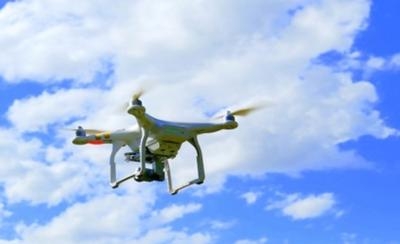Releases A Report Detailing Deficiencies In The Administration's Regulatory Efforts
The Government Accountability Office (GAO) has released a report from a study conducted after Congress and other raised questions about the extent of unsafe small UAS use and FAA’s and other agencies’ efforts to address safety risks they pose.

The GAO found that the FAA's information on the extent of unsafe use of small unmanned aircraft systems (UAS) in the national airspace system is limited. Although FAA collects data on several types of safety events involving small UAS, the accuracy and completeness of the data are questionable. For example, since 2014, pilots and others have reported to FAA over 6,000 sightings of UAS, often flying near manned aircraft or airports, but FAA officials told GAO that FAA cannot verify that small UAS were involved in most of the sightings.
Officials explained that small UAS are often difficult for pilots to identify definitively and typically are not picked up by radar. Such data limitations impede the agency’s ability to effectively assess the safety of small UAS operations. FAA is taking steps to improve its data. For example, it is developing a web-based system for the public to report any sightings of UAS that are perceived to be a safety concern and a survey of UAS users on their UAS operational activity. FAA did not have time frames for completing these efforts, but according to FAA, each of the efforts is underway and at varying stages of development. FAA is also evaluating technologies for detecting and remotely identifying UAS, and that could improve data on unsafe use.
Of the five key principles of safety risk management in its policies, FAA—in its regulatory efforts related to small UAS—followed two and partially followed three.
GAO says in the report that the FAA followed the principles of (1) defining appropriate roles and responsibilities for safety risk management and (2) describing the aviation system under consideration. FAA partially followed the other three principles: (1) analyzing and assessing safety risks; (2) implementing controls to mitigate the risks; and (3) monitoring the effectiveness of the controls and adjusting them as needed.

For example, FAA did not consistently analyze and assess safety risks in terms of their severity and likelihood; FAA officials told GAO that for some efforts, the agency did not have sufficient data to do so. However, for other efforts for which FAA did not have sufficient data, the agency made estimates based on expert judgment, as allowed under the agency’s safety risk management policy. Improved risk management practices would help FAA determine whether additional actions are needed to ensure the safety of the national airspace and provide FAA and other decision-makers with confidence that FAA is focusing on the most critical safety risks posed by small UAS.
GAO recommends that the FAA establish a mechanism to ensure that the agency's management of small UAS safety risks follows all applicable principles and requirements in the agency’s policies. The FAA agreed with GAO’s recommendation.
(Source: GAO report executive summary. Images from file)
 ANN's Daily Aero-Term (04.25.24): Airport Rotating Beacon
ANN's Daily Aero-Term (04.25.24): Airport Rotating Beacon ANN's Daily Aero-Linx (04.25.24)
ANN's Daily Aero-Linx (04.25.24) Klyde Morris (04.22.24)
Klyde Morris (04.22.24) Airborne 04.24.24: INTEGRAL E, Elixir USA, M700 RVSM
Airborne 04.24.24: INTEGRAL E, Elixir USA, M700 RVSM Airborne 04.22.24: Rotor X Worsens, Airport Fees 4 FNB?, USMC Drone Pilot
Airborne 04.22.24: Rotor X Worsens, Airport Fees 4 FNB?, USMC Drone Pilot




